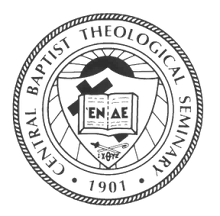The Sunday after Pentecost is Trinity Sunday,
which we celebrated yesterday. It
cheered my heart to see many Baptists posting icons and reflections on this
mostly ignored liturgical celebration.
Perhaps we are discovering we are part of the larger Body of Christ
after all. The Trinity is the chief confession
we make as Christians, and it is indispensable to faith formation and practice.
 |
|
I taught my Sunday
School class yesterday, and we had a grand conversation about “telling it
slant” (Emily Dickinson’s term) in attempting to describe the triune life of
God. Some left glassy-eyed, but
contemplating the ways God comes to us ought to prompt a sense that it is
beyond easy calculation. We usually go
off the rails when we try to “count” the Trinity in any literal numerical way.
Some will contend
that the doctrine of the Trinity does not appear in Scripture; however, the
three-fold cadence of God’s history with creation suggests that from creation
to redemption to the hope of consummation, God as creative power, saving love,
and ecstatic transformation is constant.
Indeed, God plays all the roles in the drama of salvation, as Alister
McGrath writes.
 |
|
The early practice
of Christian baptism and the offering of benediction In the New Testament
illumine the growing awareness that how one thinks of God has shifted from the
simplicity of the Shema, which
declares, “Hear, O Israel, the Lord Our God is one.” Christians did not recant this foundational
affirmation, but recognized that God’s oneness includes a trinitarian
expression.
Artists and
iconographers have devoted their best efforts to visualizing the Triune God,
which has raised suspicions that Christians are not truly monotheists. Yet, these beautiful portrayals give us a
sense of the community in which God dwells through self-giving relations. Indeed, the identity of the three is only
established through the differentiation of the Giver, Gift, and Gifting
movements of the divine life.
 |
| Notke, Bernt, ca. 1440-1509. Trinity, from Art in the Christian Tradition, a project of the Vanderbilt Divinity Library, Nashville, TN. |
Perhaps more than
any other doctrine, the Trinity demonstrates that God chooses to be with
us. God does not choose to remain in a
heaven that keeps the divine and human cordoned off, but rather shares life
with all creation. That our world
continues to be is evidence of this sustaining relationship.
My business card for
Central is a fold-over so that I could get the following information in it. Ever the professor, I wrote:
Perichoresis is a Greek word that describes the mutual indwelling of the Triune God. Through the Spirit God invites human participation in the divine life—invites us to share in God’s creative dance.
The trinitarian life of God is marked by generativity, diversity, and hospitality. The community of Central Seminary is perichoretic as well. We strive to embody these virtues as we learn to make our home with one another in God.
It is the goal of the church to
correspond to this self-giving community as we become the image of the
Trinity. Then we will better understand
the significance of this doctrine.
Molly T. Marshall
Central prepares women and men for seeking God, shaping church, and serving humanity.

No comments:
Post a Comment